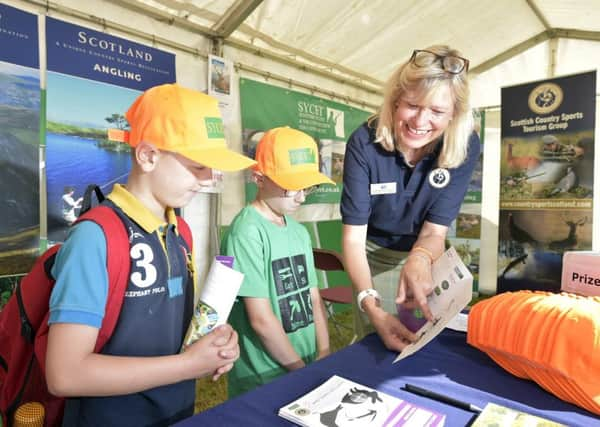Iona Laing: Game trust encourages green shoots of conservation


For many children the connection with countryside seems largely to have been lost. Despite much better access, countryside knowledge is at best scant and at worst non-existent.
The farming sector has grasped the nettle, making the connections, forging links, taking schoolchildren to see where our food comes from – all credit to the Royal Highland Education Trust (RHET), the Royal Northern Countryside Initiative, LEAF Open Farm Sunday and others.
Advertisement
Hide AdAdvertisement
Hide AdBut we are rapidly approaching 2022, the most likely date for the next farm support regime to kick in. This will increasingly find farmers farming not mainly for food, but also for the environment, for nature, and for the public interest. We need to start telling youngsters about this.
The importance of crops for wildlife, of beetle banks, of field margins, of hedges, of farm woodland, of ponds and bog, will all take on extra significance in modern farming.
Neighbouring farmers working together may become more commonplace; this should enable scale and focus to deliver better results. Among the wildlife that can benefit, or that can trigger far wider benefits, is game. Farming for the success of game species, which can provide an alternative income stream or a source of recreation, will bring benefits for a wider range of birds and animals – songbirds, small mammals, bees, insects and invertebrates.
Spreading this knowledge at an early age is important. So, what is the Game and Wildlife Conservation Trust doing about it?
Our work with youngsters was expanded this year at the GWCT Scottish Game Fair at Scone Palace. Visitors aged eight to 21 were able to take part in the Junior Macnab challenge, a new event devised by the Scottish Country Sports Tourism Group and GWCT, involving virtually hunting rabbit and pigeon, and fishing for trout.
The event, which attracted 200 entrants over three days, was designed to encourage youngsters to think about taking up shooting and fishing and being active and engaged with the countryside.
It was sponsored by the Scottish Youth and Countryside Education Trust and supported by BASC Scotland and the Game Angling Instructors Association with prizes donated by Decathlon Sports.
In The Covey, our education area, there was hands-on science, storytelling, and arts and crafts aimed at the next generation of young ecologists. As well as activities and ‘have-a-go’ opportunities, there were exhibits featuring moths, hatching quail chicks and ferrets, microscopes to explore the farmland underworld, and a special display highlighting the habitat of the grey partridge. Artist Julian Jardine held ceramic workshops, there was also a scavenger hunt and the butterfly bog squad!
Advertisement
Hide AdAdvertisement
Hide AdWe also organise school visits to our PARTRIDGE demonstration sites at Whitburgh and at Balgonie.
In Fife, children from Milton of Balgonie school planted 500 hedge plants two years ago to create new habitat for gamebirds and songbirds and have been visiting since then to see the fruits of their labours.
At Whitburgh Farms straddling the East Lothian/Midlothian boundary, visits have been organised for Tynewater Primary and Elphinstone Primary schools to learn about the environment. We have also held a children’s art competition for the last 14 years. Aimed at pupils across Perth and Kinross it runs in conjunction with Perth and Kinross Council’s education and children’s services and RHET. Pupils are encouraged to create a piece of art depicting a game or wildlife species from anywhere in the UK relevant to the Trust’s conservation work.
GWCT also hosts a Young Shooters’ Day at our demonstration farm at Auchnerran, Aberdeenshire, for boys and girls aged 12 to 15, which covers tuition and clay shooting, conservation skills, game management, and preparing game for the table. The course is on 22 August, with places still available. See www.gwct.org.uk/events/calendar/ for more details.
The future prosperity of the countryside might rest now with our farmers, land, game and wildlife managers, foresters, politicians and others.
But it also rests with our youngsters, who can learn from an early age to enjoy it, to want to work in it and with it, and to see it prosper.
Iona Laing, education and events officer, GWCT Scotland.